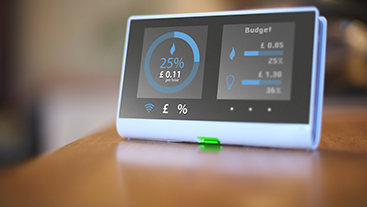Market failures and willingness to accept the smart energy transition: Experimental evidence from the UK

Download
To facilitate the sustainable energy transition, governments and innovators are encouraging households to adopt smart technologies that allow for increased flexibility in energy grids. One example is the UK Government’s ambitious Smart Metering Implementation Programme (SMIP), which has indisputably failed to achieve its objective of equipping all dwellings with smart meters by 2020.
The authors of this research conducted a novel experiment on a nationally representative sample of UK households with the aim of quantifying resistance to smart meter adoption and testing for the existence of commonly cited market failures that inhibit the adoption of energy-saving technologies. The market failures in question relate to consumers being under-informed of the benefits of smart meters, either to themselves or to wider society, and unaware of the learning and technological improvements that have taken place in previous years of the roll-out.
The authors measured first, whether households would adopt a smart meter without financial compensation (15% of the sample), and second, for those households unwilling to do so, the subsidy level that would be necessary to persuade them. They found that offering £10, £25, £50 or £100 subsidies induced additional adoption of 4, 9, 24 and 53 percentage points. Information campaigns focussed on the private benefits did not induce further adoption, although information regarding the benefits to wider society did further boost uptake.
To date, providing information on the private benefits has been the primary messaging used by the UK Government and Smart Energy GB, the body tasked with conducting the information campaign. The research is helpful to policymakers in its demonstration of a method to identify and measure barriers to adoption of smart meters and to devise an appropriate policy response. It demonstrates the benefit of a broader information campaign educating consumers about the society-wide benefits of household-level action.
Key points for decision makers
- The authors conducted a valuation exercise in which households revealed their willingness to accept (WTA) compensation for smart meters. They additionally tested the impact of different ‘information treatments’ (short, illustrated information on either the private benefits of meters, the social benefits ( or the learning from previous roll-outs and technology improvements) in reducing WTA.
- The information treatments can be summarised as follows: (i) private benefits focused on individual energy savings and associated cost reductions; (ii) social benefits focused on the expected total UK energy savings, and the efficiency and reliability gains from having a more modern energy system; the learning-by-using treatment, focused on technology improvements with the new generation of meters (SMETS2) and information on cumulative installations demonstrating that adoption is becoming more widespread.
- From the responses the authors can assess the impact of market failures in the decision to adopt the technology, and infer adoption rates at various subsidy levels in this context. The market failures relate to ‘information asymmetries’ – where people may be under-informed of either the private or social benefits of smart meters, or ‘learning-by-using externalities’ – where people may be unaware of the accumulated learning of previous years of smart meter roll-out and improvements in the technology over time.
- While 15% of participants indicate that they would like to adopt a smart meter without compensation, the results of the valuation exercise suggest that offering subsidies of £10, £25, £50 and £100 would induce additional adoption of smart meters of 4, 9, 24, and 53 percentage points respectively.
- For those participants who did not undertake the valuation exercise, a simple take-it-or-leave-it offer of £10 induced additional uptake by 6 percentage points.
- Pairing subsidies with a social information campaign can boost adoption by an additional 1–5 percentage points.
- Providing information on private benefits (expected energy cost savings) has no observable impact on smart meter adoption.
- The cost of subsidising people who would have otherwise adopted a meter at a lower value – the ‘inframarginal costs’ – dominate the cost of any subsidy programme, ranging from 53–83% of total costs. From the perspective of minimising the percentage of policy expenditures that are inframarginal, a subsidy of £100 may be optimal.
- While such a subsidy is considerably higher than the offers currently being made by energy suppliers, it is within a range deemed cost-effective by the UK Government’s cost-benefit analysis of smart meter roll-out.
This paper was originally published in May 2020 and updated in July 2021.

